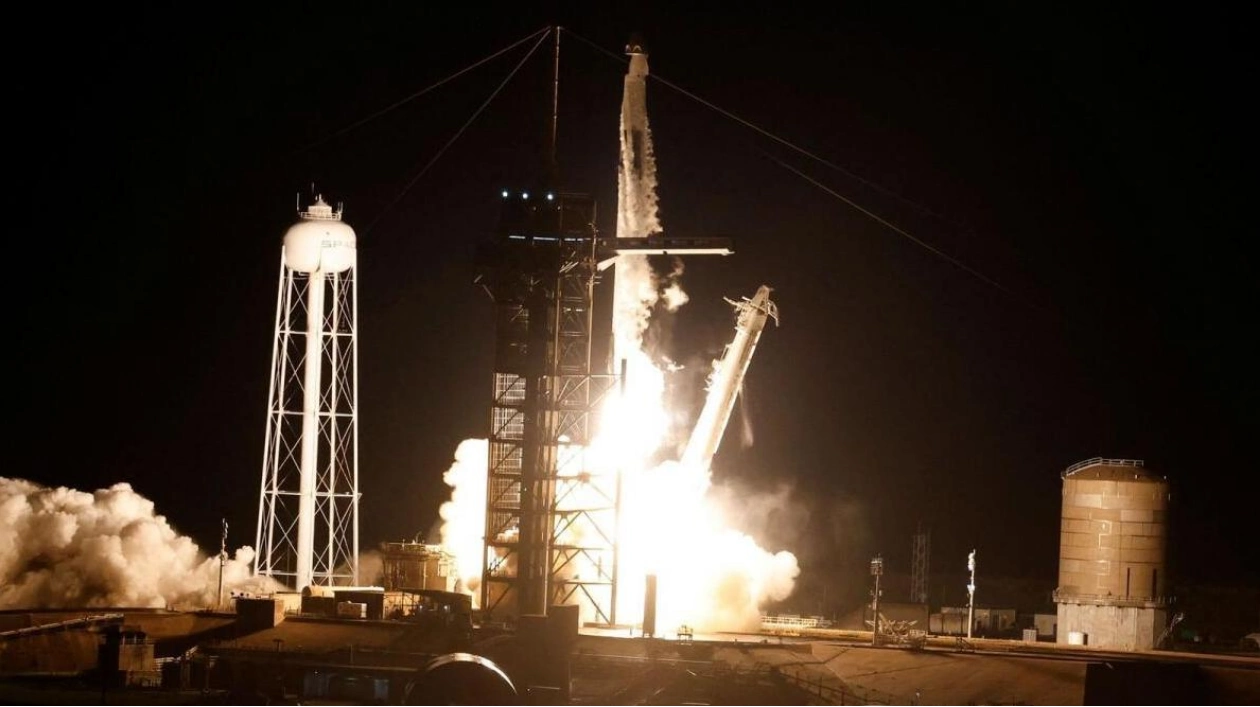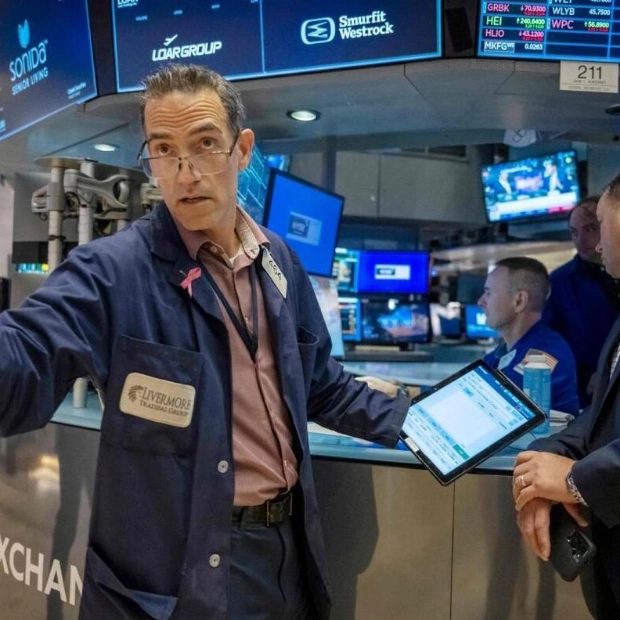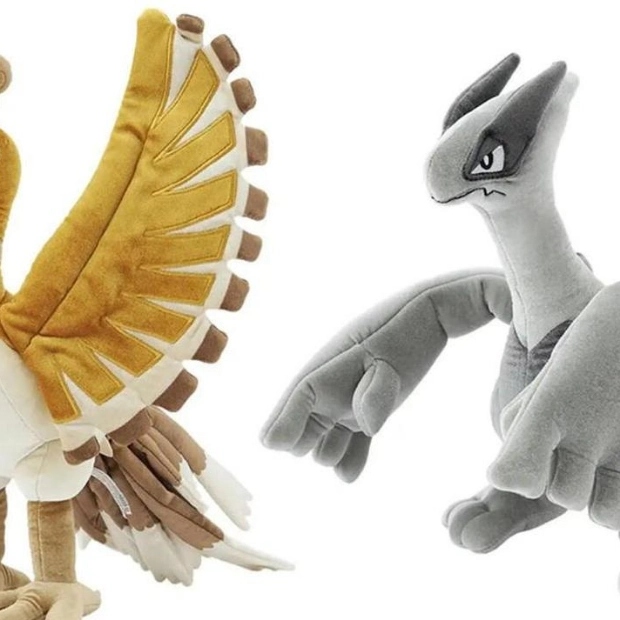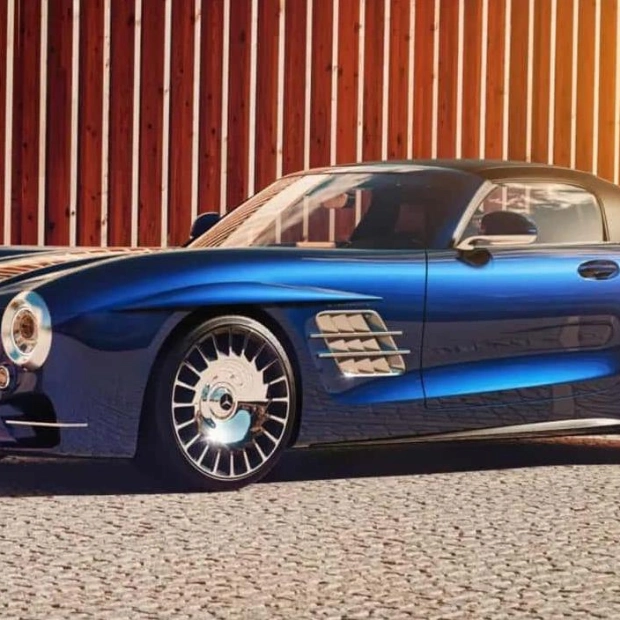Early Tuesday morning, four private astronauts embarked on a journey into space aboard a modified SpaceX Crew Dragon capsule, marking the commencement of the company's five-day Polaris Dawn mission. The mission aims to evaluate new spacesuit designs and conduct the first private spacewalk. The crew, comprising a billionaire entrepreneur, a retired military fighter pilot, and two SpaceX employees, launched from NASA's Kennedy Space Center in Florida at approximately 5:23 am EST (0923 GMT). The capsule achieved orbit approximately nine and a half minutes later, and the crew experienced the sensation of zero gravity as they floated around a small plush astronaut toy dog. Three minutes after separating from its support trunk, onboard cameras captured a breathtaking view of the capsule against the backdrop of a sunlit Earth.
SpaceX launch director Frank Messina conveyed a message to the crew via radio: "As you gaze toward the North Star, remember that your courage lights the map for future explorers. We trust your skills, your bravery, and your teamwork to carry out the mission ahead. ... We are sending you hugs from the ground." The mission's Falcon 9 booster successfully landed on a seaborne pad. This marks the fifth and most challenging private mission for the Crew Dragon spacecraft. The capsule will eventually settle into an oval-shaped orbit, reaching distances as close as 190km and as far as 1,400km from Earth, making it the farthest human venture since the conclusion of the US Apollo moon program in 1972.
A previous launch attempt in the previous month was postponed due to a minor helium leak in ground equipment at SpaceX's launchpad. After resolving the issue, the Falcon 9 was grounded by U.S. regulators following a booster recovery failure during an unrelated mission, further delaying the Polaris launch. Tuesday's launch was delayed by approximately two hours due to unfavorable weather conditions. Historically, only highly trained, well-funded government astronauts have conducted spacewalks. There have been approximately 270 spacewalks on the International Space Station (ISS) since its inception in 2000, and 16 by Chinese astronauts on Beijing's Tiangong space station.
The Polaris Dawn spacewalk is scheduled for the mission's third day at an altitude of 700km and is expected to last about 20 minutes. The Crew Dragon craft will gradually depressurize its entire cabin—unlike the ISS, it lacks an airlock—and all four astronauts will rely on their streamlined, SpaceX-built spacesuits for oxygen. The first U.S. spacewalk occurred in 1965 aboard a Gemini capsule, employing a similar procedure to the one planned for Polaris Dawn: the capsule was depressurized, the hatch opened, and a spacesuited astronaut ventured outside on a tether.
Jared Isaacman, a 41-year-old pilot and the billionaire founder of electronic payment company Shift4, is funding the Polaris mission, as he did for his Inspiration4 flight with SpaceX in 2021. He has declined to disclose the cost of the missions, but they are likely to amount to hundreds of millions of dollars. Joining him are mission pilot Scott Poteet, a 50-year-old retired U.S. Air Force lieutenant colonel, and SpaceX employees Sarah Gillis, a 30-year-old senior engineer, and Anna Menon, a 38-year-old senior engineer. For the spacewalk, Isaacman and Gillis will exit the spacecraft tethered by an oxygen line, while Poteet and Menon remain in the cabin.
This mission is the inaugural flight of Isaacman's private Polaris program, which includes a subsequent Crew Dragon mission and a future flight on SpaceX's Starship, a colossal rocket the company has invested billions of dollars in developing for lunar and Martian exploration. The four-person crew will serve as test subjects for a series of scientific experiments aimed at understanding how cosmic radiation and the vacuum of space affect the human body, building on decades of research conducted on astronauts living aboard the ISS. Since the retirement of the Space Shuttle in 2011, NASA has heavily relied on SpaceX and its Crew Dragon, which has completed nine astronaut missions to and from the ISS as the only operational U.S. crew-grade vehicle.
SpaceX has previously conducted four private missions: Isaacman's Inspiration4 and three private astronaut flights arranged by Houston-based mission broker Axiom Space. Meanwhile, Boeing is struggling to develop a similar spacecraft, Starliner, that could rival Crew Dragon. However, Starliner's latest NASA test mission in June, its first crewed flight, left its astronauts on the ISS last week due to issues with its propulsion system.






